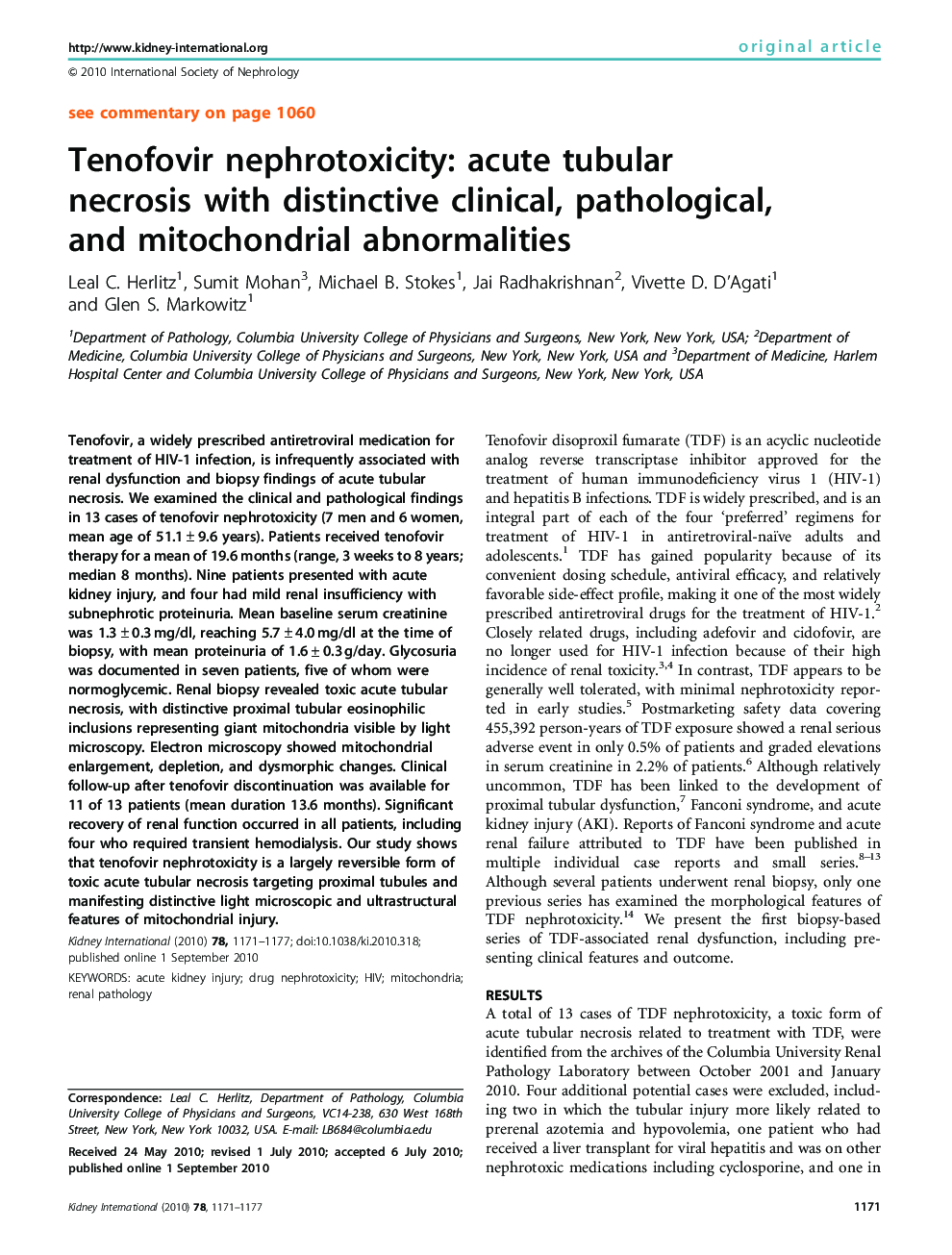| Article ID | Journal | Published Year | Pages | File Type |
|---|---|---|---|---|
| 3883384 | Kidney International | 2010 | 7 Pages |
Tenofovir, a widely prescribed antiretroviral medication for treatment of HIV-1 infection, is infrequently associated with renal dysfunction and biopsy findings of acute tubular necrosis. We examined the clinical and pathological findings in 13 cases of tenofovir nephrotoxicity (7 men and 6 women, mean age of 51.1±9.6 years). Patients received tenofovir therapy for a mean of 19.6 months (range, 3 weeks to 8 years; median 8 months). Nine patients presented with acute kidney injury, and four had mild renal insufficiency with subnephrotic proteinuria. Mean baseline serum creatinine was 1.3±0.3 mg/dl, reaching 5.7±4.0 mg/dl at the time of biopsy, with mean proteinuria of 1.6±0.3 g/day. Glycosuria was documented in seven patients, five of whom were normoglycemic. Renal biopsy revealed toxic acute tubular necrosis, with distinctive proximal tubular eosinophilic inclusions representing giant mitochondria visible by light microscopy. Electron microscopy showed mitochondrial enlargement, depletion, and dysmorphic changes. Clinical follow-up after tenofovir discontinuation was available for 11 of 13 patients (mean duration 13.6 months). Significant recovery of renal function occurred in all patients, including four who required transient hemodialysis. Our study shows that tenofovir nephrotoxicity is a largely reversible form of toxic acute tubular necrosis targeting proximal tubules and manifesting distinctive light microscopic and ultrastructural features of mitochondrial injury.
